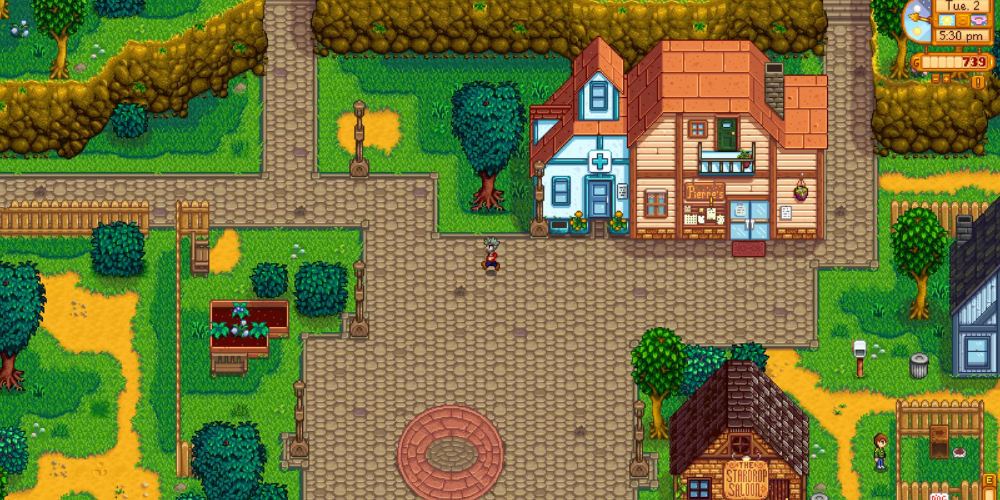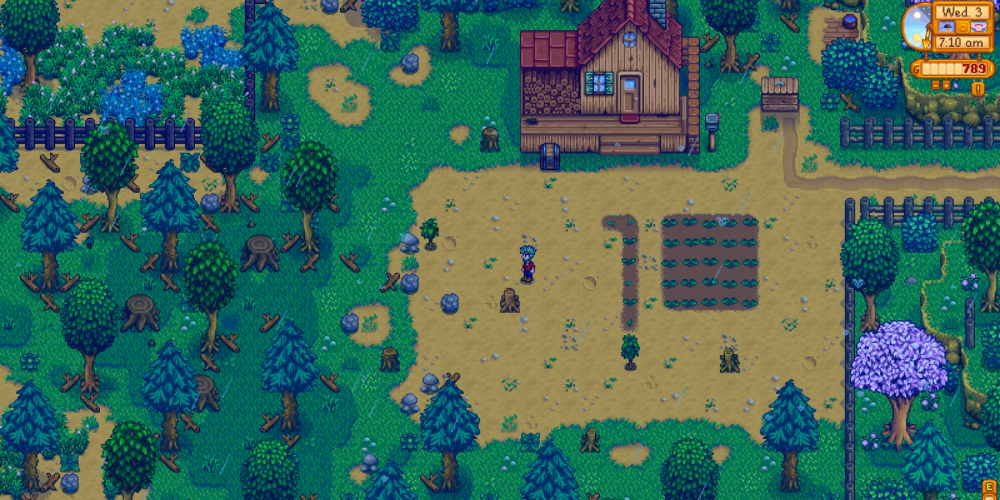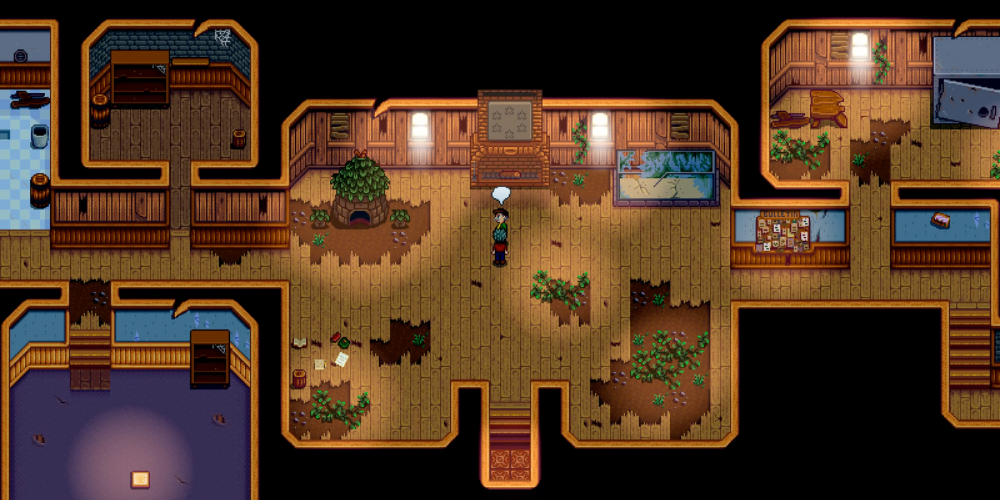
Stardew Valley: Secrets to a Prosperous Farm Life
Stardew Valley, a charming and enthralling farm simulation game, captivates players with its simple yet deep gameplay mechanics. In this pixelated paradise, you inherit a rundown farm tasked with turning it into a prosperous haven. But beyond the idyllic scenery and tranquil daily routines, Stardew Valley is a game of strategy, foresight, and community. Whether you're a seasoned farmer looking to refine your strategies or a new player eager to lay down roots, mastering the art of farming in this game requires more than just watering crops. In this guide, we'll uncover the secrets to a thriving farm life in Stardew Valley, exploring everything from crop management to community engagement. Let's embark on the journey to make your farm flourish.
1. Strategic Crop Selection and Rotation
The cornerstone of any successful farm is its crops. In Stardew Valley, not all crops are created equal. Some are more profitable, while others grow faster or repeat harvests throughout the season. Understanding the crop cycle and selecting the right crops for each season is crucial. For instance, planting Strawberries in spring, Blueberries in summer, and Cranberries in fall can significantly boost your income due to their multiple harvests. Additionally, incorporating crop rotation and diversification into your strategy minimizes risk and ensures a steady income stream. Remember, some crops like Ancient Fruit and Sweet Gem Berries can be extremely profitable, albeit harder to obtain.
2. Maximizing Efficiency with Farm Layout
Planning your farm layout is not just about aesthetics; it's about maximizing efficiency and productivity. Consider the placement of crops, sprinklers, and scarecrows to minimize manual labor and maximize crop coverage. Efficient space utilization ensures that every inch of your farm is working for you. For example, implementing a grid layout with sprinklers at key positions can save you countless hours of watering, allowing you to focus on other tasks. Additionally, dedicating sections for machines and livestock ensures smooth daily operations and prevents unnecessary back-and-forth trips across the farm.
3. Livestock Management for Long-term Gains

While crops are the backbone of your farm, livestock can be a source of income and resources. Properly managing your animals ensures a constant supply of milk, eggs, and wool, which can be further processed into more valuable products. Investing in high-quality feed and regularly interacting with your animals increases their happiness and productivity. Furthermore, constructing the right buildings and upgrading them in time can lead to more efficient animal care and higher quality products. Remember, happy animals produce better quality goods, so regular care and attention are key.
4. Mastering the Art of Fishing
Fishing in Stardew Valley is more than just a leisurely pastime; it's a lucrative venture. Different fish are available in different seasons, weather conditions, and times of the day. Learning the patterns of rare and seasonal fish can significantly boost your income, especially in the early game. Additionally, improving your fishing skills and upgrading your rod with bait and tackle can help you catch more valuable fish. Consider dedicating time to mastering the fishing mini-game, as the rewards are well worth the effort. Crafting crab pots also allows for passive income, making it a valuable addition to your farm's economy.
5. Foraging for Extra Income and Resources
Don't underestimate the value of foraging. The lands surrounding your farm offer a variety of resources, including wild fruits, vegetables, and valuable items like hardwood. Regularly exploring the valley, especially in different seasons, can yield significant rewards. Foraged items can be sold for extra income, used in crafting, or as ingredients for cooking and gifts. Additionally, leveling up your foraging skill unlocks useful crafting recipes and increases the value of foraged goods. It's also a great way to gather food and resources for adventuring in the mines.
6. Delving into the Mines for Valuable Resources

Mining is a crucial component of Stardew Valley, offering both adventure and valuable resources. The deeper you delve, the more precious metals and gems you'll find, which are essential for crafting and upgrading tools. Effective mining trips require preparation; bring enough food to maintain your energy and health, and upgrade your pickaxe for more efficient mining. Additionally, timing your mining expeditions on rainy days can save valuable farming time. The mines also host various monsters, providing a combat element to the game and the opportunity to gather rare items and resources.
7. Building Relationships with Villagers
Relationships in Stardew Valley are not just for narrative enjoyment; they're a pivotal aspect of farm life. Befriending villagers can lead to helpful tips, gifts, and even unlockable content. Each villager has unique likes and dislikes, making gift-giving a strategic choice. Remembering birthdays and special occasions significantly boosts relationship levels. Additionally, some characters can become spouses, contributing to farm work and providing companionship. Engaging in the community through festivals and events also strengthens your ties to Stardew Valley, enhancing the overall experience.
8. Utilizing the Community Center to its Fullest
The Community Center is at the heart of Stardew Valley's restoration narrative. Completing bundles with specific items rewards you with valuable upgrades and benefits, such as repairing the bus to the desert or unlocking the greenhouse. Prioritizing certain bundles can significantly accelerate your farm's development. For example, aiming to complete the Pantry bundles early on grants access to the greenhouse, allowing for year-round crop growth. Focusing on bundles strategically can enhance your farming efficiency, unlock new areas, and bring the community together.
9. Embracing Seasonal Opportunities and Challenges

Each season in Stardew Valley brings unique opportunities and challenges. Planning ahead for seasonal events, like the Egg Festival or the Stardew Valley Fair, can offer substantial rewards and benefits. Additionally, understanding the limitations and potentials of each season helps in deciding which crops to plant or which activities to prioritize. Preparing resources and strategies for winter, when farming activities are limited, can ensure smooth operation and income flow even in the off-season. Embrace the changing seasons and adapt your strategies to make the most out of each one.
10. Leveraging Crafting and Artisan Goods
Crafting and producing artisan goods are crucial for elevating your farm's productivity and income. Processed goods like cheese, wine, and preserved fruits typically sell for much higher prices than their raw components. Investing in equipment like kegs, preserves jars, and cheese presses early on can significantly boost your profits. Crafting also extends to creating useful items like sprinklers, beehives, and crab pots, enhancing your farm's efficiency. Mastering the balance between raw produce and artisan goods can lead to unparalleled prosperity in Stardew Valley.
Stardew Valley offers a unique blend of farming simulation and role-playing elements, captivating players with its depth and versatility. By mastering the secrets to prosperous farm life—ranging from strategic crop selection to deep community engagement—you can transform your inherited farm into a thriving agricultural enterprise. Remember, success in Stardew Valley comes from a blend of hard work, strategy, and a touch of community spirit. Embrace the challenges, revel in the successes, and enjoy the journey of becoming Stardew Valley's most esteemed farmer.











